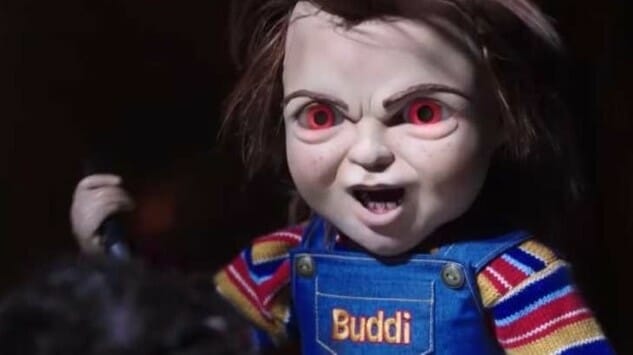Child’s Play

There are film reboots, and there are film remakes. A “remake,” theoretically would involve the adapting of a well-known story—one for which there is fondness, or why would we be doing it—into a newly shined version, ready to be consumed by the modern audience. It would keep the spirit and basic structure of the original intact, while adding a new coat of polish. You could ask “why bother doing it at all?”, and the answer would be the same for any remake: Because it might make an easy profit, and because audiences don’t award original ideas.
The new version of Child’s Play isn’t that. This is a pure “reboot,” and the fact that it’s difficult to evaluate against the franchise as a whole is a direct result. It has a few things in common with the original 1988 Child’s Play, sure. Like the following:
— It has a killer doll named “Chucky” in it.
— It’s a quasi-slasher film.
And that’s pretty much it. Essentially everything else that typified the Child’s Play series, and its intricate mythology from shepherding writer-director Don Mancini, has been abandoned here in favor of a “modernized” story that is attempting to make the same kind of garden-variety “we’re all too dependent on modern technology and social media” statement that has been made across the science fiction genre ad nauseum for the past decade. This Child’s Play is attempting to be both a retro slasher and some kind of banal piece of social commentary at the same time. The first, it mostly succeeds at. The latter, it doesn’t have time to even attempt in earnest.
Make no mistake, though: The biggest problem here is the core of the decision to reimagine the fabric of what Chucky is. In the 1988 original, he’s a child’s toy, a “Good Guy Doll” that ends up possessed by the spirit of serial killer Charles Lee Ray, imbuing the pint-sized terror with a foul mouth, short temper, inhuman cunning and a desire to possess and destroy. Here, on the other hand, the Chucky doll has no need to play the “I’m only an inanimate object” hiding game—he’s a top-of-the-line, AI-driven robot companion and Google Home satire object, not evil by nature but by random, stupid chance. As so many internet dwellers have already observed, the plot to this Child’s Play was uttered almost in full back in The Simpsons’ 1992 Halloween special, regarding a murderous Krusty doll: “Ah, here’s your problem: Someone set this thing to evil!”
-

-

-

-

-

-

-

-

-

-

-

-

-

-

-

-

-

-

-

-

-

-

-

-

-

-

-

-

-

-

-

-

-

-

-

-

-

-

-

-








































